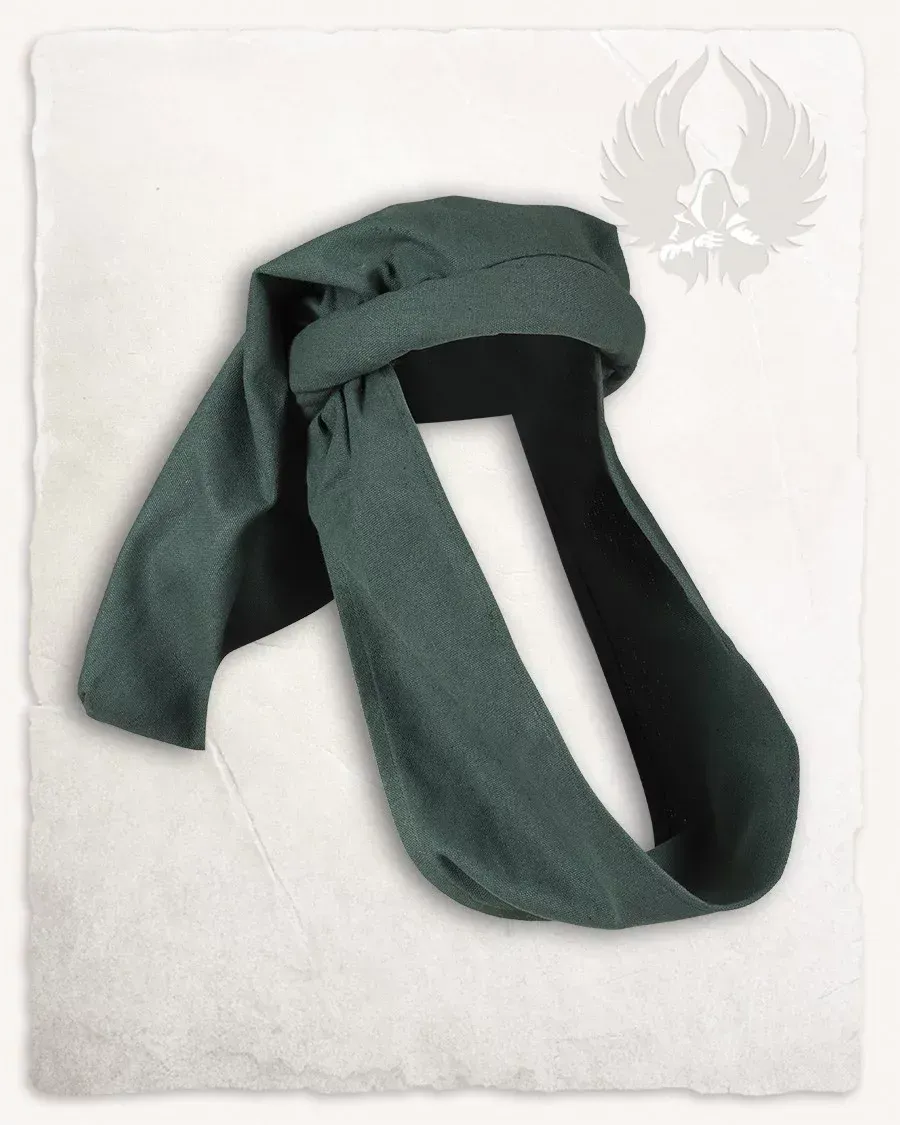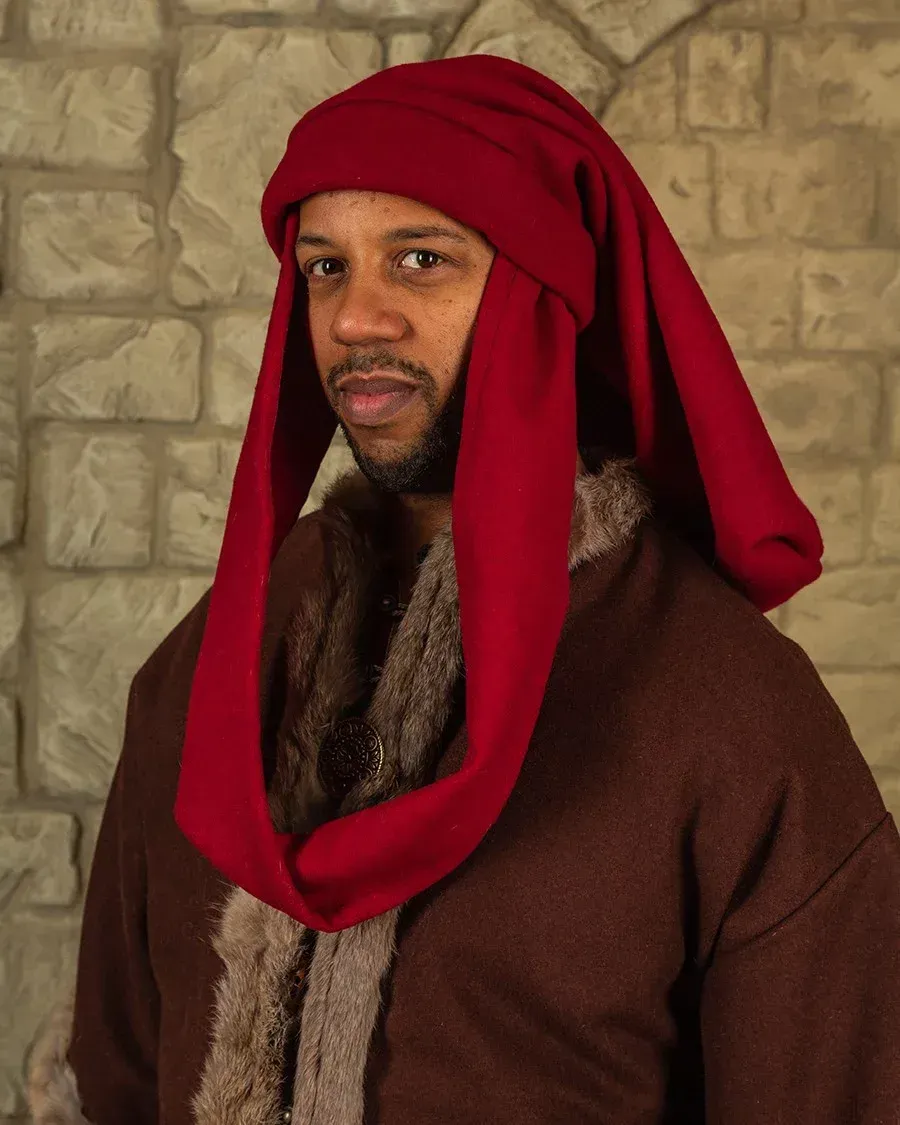What is a Chaperon?
The chaperon is a medieval headdress that was widely used in Western Europe during the Middle Ages. Its usage spread particularly from the 13th to the 15th century, reflecting both the functionality and social status of the wearer. Over the centuries, this garment evolved from a simple hood to a complex and elaborate element within medieval clothing.
Origins and Description of the Chaperon
The term "chaperon" comes from the French "chaperon," which has its roots in the Latin "cappa," referring to a cape or hood. Originally, the chaperon was a short hood with a liripipe, a long tail at the back. It was commonly used as a short cape that could be worn over the head or tied at the front, providing protection against inclement weather.

Evolution and Typology
Over time, the chaperon underwent a remarkable transformation. It changed from a simple hood to an elaborate garment that reflected the status and fashion of the moment. It became popular in Northern Europe among both men and women. The design evolved to include a wide hood at the back, often ending in a long pointed tail. These garments could be closed, leaving only an opening for the face, or open at the front and fastened with buttons.
Decoration and Embellishments of the Chaperon
The chaperon was not only practical but also decorative. Elements such as the **bourrelet**, a decorative ring, were sometimes added to enhance the outfit's style. Materials used included fabrics like wool and cotton, ideal for providing warmth and protection against rain. During the 14th century, chaperons with pointed hoods became popular, often adorned with turns at the front, achieving a more streamlined and fashionable look.

Social and Cultural Use
The chaperon became a symbol of status, especially at the Burgundian court of the 15th century. Terms such as **patte**, **cornette**, and **bourrelet** were used to describe its different components. Chaperons frequently appeared in early Flemish painting, depicting nobles and courtiers with elaborate designs that reflect the sophistication of the era.
Historical Context
The first documentation of chaperons dates back to the late 13th century, when they became popular in Western Europe. During the 14th century, it was common to wear the chaperon in an unconventional manner, placing the head through an opening meant for the face. This led to a variety of unique and sophisticated styles that prevailed until the 15th century.
The Capirote and the Evolution of the Term
The chaperon, also known as capirote or capirón, originated in France and was adopted by various social classes, with women beginning to wear it from the 14th century. Although there are no records of women's use in the 15th century, this garment initially served a similar function to the hood or 'capuchon' of 11th-century cloaks, offering protection against the elements. Later, it evolved and came to be called "chapel" in the 15th century.
| Culture | Period | Material | Decoration |
|---|---|---|---|
| Western Europe | 13th-15th Century | Wool, Cotton | Bourrelet, Turns |
| Burgundian Court | 15th Century | Luxury Fabrics | Patte, Cornette |
The chaperon stands as a distinctive garment of the Middle Ages, whose evolution from a simple hood to an elaborate accessory reflects the creativity and sophistication of medieval fashion in Western Europe.
















